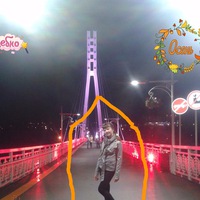
Що спричинило появу класицизму
 0
0
 0
0
Ответы на вопрос
 Внимание! Ответы на вопросы дают живые люди. Они могут содержать ошибочную информацию, заблуждения, а также ответы могут быть сгенерированы нейросетями. Будьте внимательны. Если вы уверены, что ответ неверный, нажмите кнопку "Пожаловаться" под ответом.
Внимание! Ответы на вопросы дают живые люди. Они могут содержать ошибочную информацию, заблуждения, а также ответы могут быть сгенерированы нейросетями. Будьте внимательны. Если вы уверены, что ответ неверный, нажмите кнопку "Пожаловаться" под ответом.

Ответ:
Історичні умови у Франції XVII ст. сприяли виникненню класицизму як напряму в літературі та в інших видах мистецтва. У той час у Франції відбувалося формування централізованої абсолютистської держави що мало позитивний вплив на розвиток усіх галузей суспільства.
 0
0
 0
0

The Emergence of Classicism
Classicism is an artistic and intellectual movement that emerged in the 17th and 18th centuries. It was characterized by a return to the principles and aesthetics of ancient Greek and Roman art and literature. The movement sought to revive the ideals of order, harmony, and proportion that were prevalent in classical antiquity. The emergence of classicism was influenced by several factors:
1. Renaissance Humanism: The Renaissance period, which preceded classicism, witnessed a renewed interest in the study of classical texts and ideas. Renaissance humanists sought to revive the knowledge and wisdom of ancient Greece and Rome, leading to a rediscovery of classical art and literature. This rediscovery laid the foundation for the emergence of classicism.
2. Enlightenment Rationalism: The Enlightenment, an intellectual movement of the 18th century, emphasized reason, logic, and scientific inquiry. Enlightenment thinkers admired the rationality and order found in classical works and sought to apply these principles to various aspects of society, including art and architecture. Classicism, with its emphasis on reason and order, resonated with the ideals of the Enlightenment.
3. Reaction against Baroque Excesses: The Baroque period, which preceded classicism, was characterized by elaborate ornamentation, dramatic effects, and a sense of grandeur. Classicism emerged as a reaction against the excesses of the Baroque style. Artists and intellectuals sought to simplify and streamline artistic expression, drawing inspiration from the simplicity and elegance of classical art.
4. Neoclassical Architecture: The emergence of classicism was particularly evident in architecture. Neoclassical architects drew inspiration from ancient Greek and Roman buildings, incorporating classical elements such as columns, pediments, and symmetrical designs into their structures. This architectural style became popular in Europe and the United States, symbolizing a return to the ideals of classical antiquity.
5. Influence of Ancient Rome: The rediscovery of ancient Roman ruins and artifacts also played a significant role in the emergence of classicism. The excavations of Pompeii and Herculaneum in the 18th century revealed well-preserved examples of Roman art and architecture. These discoveries sparked a renewed interest in classical aesthetics and influenced the development of the neoclassical style.
In conclusion, the emergence of classicism was influenced by various factors, including the Renaissance humanism, Enlightenment rationalism, reaction against Baroque excesses, neoclassical architecture, and the influence of ancient Rome. These factors collectively contributed to the revival of classical ideals and aesthetics in art, literature, and architecture during the 17th and 18th centuries.
 0
0
 0
0
Похожие вопросы
Топ вопросов за вчера в категории Литература
Последние заданные вопросы в категории Литература
-
Математика
-
Литература
-
Алгебра
-
Русский язык
-
Геометрия
-
Английский язык
-
Химия
-
Физика
-
Биология
-
Другие предметы
-
История
-
Обществознание
-
Окружающий мир
-
География
-
Українська мова
-
Информатика
-
Українська література
-
Қазақ тiлi
-
Экономика
-
Музыка
-
Право
-
Беларуская мова
-
Французский язык
-
Немецкий язык
-
МХК
-
ОБЖ
-
Психология
-
Физкультура и спорт
-
Астрономия
-
Кыргыз тили
-
Оʻzbek tili




























